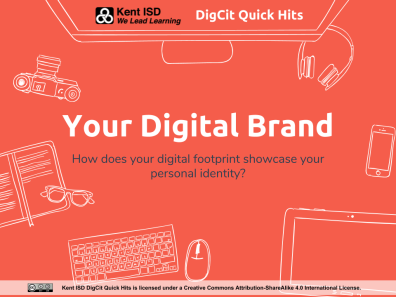According to CareerBuilder, 70% of employers use your social networks to research you during the hiring process and 47% are less likely to interview you if they can’t find you online. The stories we tell online through our social media accounts are important to craft carefully.
Activity
Here’s an activity that may open new perspectives to how you might wield your digital footprint to create more positives in your life or the lives of your students. Need help? Feel free to use this slide deck with the activity.
- Share some of the statistics collected in the August 2018 CareerBuilder Survey.
- Create a map of the things that represent you. What are you involved in? What interests you? What’s unique about you? What are you good at?
- Now describe the ways you could promote these aspects about yourself using social media. Where would you post? What hashtags might you use? What digital communities could you follow?
- Encourage your students to develop and execute a plan to positively promote their digital brand.
Discussion Questions
- You are mostly in control of your digital footprint, how might you use social media to shape your personal brand?
- In what ways do your friends and family shape your story online? How do you shape theirs?
- What steps might you take to protect your brand? What privacy control settings might you use to make sure that you are in control of your own story?
- What steps can you actively take to promote your strengths, your participation, your interests?
DigCit Quick Hits are short activities designed for educators to use with students, staff or community members. Our intention is to build awareness through open dialogue around pertinent topics in digital life that affect our communities. Please contact Keith Tramper at keithtramper@kentisd.org with questions, requests for support or feedback.
